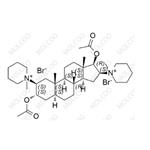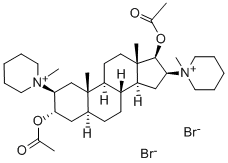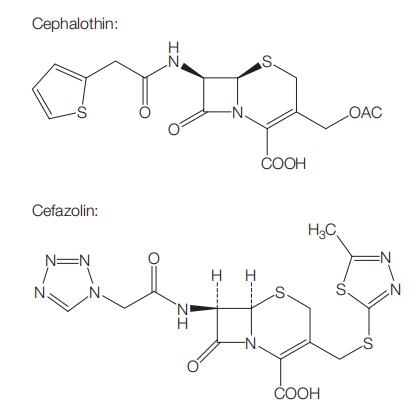A muscle relaxant: Pancuronium bromide
Pancuronium bromide, a muscle relaxant, was first prepared in 1967 by W. R. Buckett and co-workers, who published several papers on the drug. They designed it to mimic two acetylcholine molecules with rigidly spaced quaternary nitrogen atoms. It is used primarily as a neuromuscular blocking agent to relax muscles during surgery. It is also used in some US states as the second ingredient in the three-drug injection sequence for administering the death penalty—a use that some observers consider inhumane.
Pharmacodynamics
Pancuronium is a non-depolarising muscle relaxant similar to curare. It acts as a competitive acetylcholine antagonist on neuromuscular junctions, displacing acetylcholine (hence competitive) from its post-synaptic nicotinic acetylcholine receptors. It is, unlike suxamethonium, a non-depolarising agent, which means, that it causes no spontaneous depolarisations upon association with the nicotinic receptor in neuromuscular junction, thus producing no muscle fasciculations upon administration. Pancuronium has no hormonal activity. It exerts slight vagolytic activity (i.e. diminishing activity of the vagus nerve) and no ganglioplegic (i.e., blocking ganglions) activity.
Mechanism of action
Nondepolarizing neuromuscular blocking agents inhibit neuromuscular transmission by competing with acetylcholine for the cholinergic receptors of the motor end plate, thereby reducing the response of the end plate to acetylcholine. This type of neuromuscular block is usually antagonized by anticholinesterase agents.
Drug Interactions
Prior administration of succinylcholine may enhance the neuromuscular blocking effect of Pancuronium and increase its duration of action. If succinylcholine is used before Pancuronium bromide, the administration of Pancuronium bromide should be delayed until the patient starts recovering from succinylcholine-induced neuromuscular blockade.
If a small dose of Pancuronium bromide is given at least 3 minutes prior to the administration of succinylcholine, in order to reduce the incidence and intensity of succinylcholine-induced fasciculations, this dose may induce a degree of neuromuscular block sufficient to cause respiratory depression in some patients.
Other nondepolarizing neuromuscular blocking agents (vecuronium, atracurium, d-tubocurarine, metocurine, and gallamine) behave in a clinically similar fashion to Pancuronium bromide. The combination of Pancuronium bromide-metocurine and Pancuronium bromide-d-tubocurarine are significantly more potent than the additive effects of each of the individual drugs given alone, however, the duration of blockade of these combinations is not prolonged. There are insufficient data to support concomitant use of Pancuronium and the other three above mentioned muscle relaxants in the same patient.
You may like
Related articles And Qustion
Lastest Price from Pancuronium bromide manufacturers

US $0.00/g2025-04-21
- CAS:
- 15500-66-0
- Min. Order:
- 1g
- Purity:
- 98%-102%
- Supply Ability:
- 1000g

US $0.00-0.00/mg2025-04-18
- CAS:
- 15500-66-0
- Min. Order:
- 10mg
- Purity:
- 98
- Supply Ability:
- 10000000


